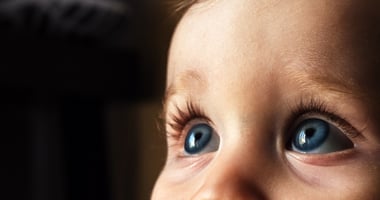A Danish study published online in Pediatrics this week reported a possible link between mothers...
Infants Who Disengage From Speaking Faces May Be at Increased Autism Risk, Study Finds
 |
Researchers from Yale University School of Medicine and University of Texas Southwestern Medical Center used an eye-tracking technology to analyze the gaze of 100 six-month olds who looked at videos of still, smiling, and speaking faces. Three years later, the infants were divided into groups based on typical development, developmental delays, or a diagnosis of ASD. The analysis showed that infants who later developed ASD not only looked at faces less than other infants, but also looked away from key facial features such as eyes and mouth when being shown a face that was speaking. According to the authors, this is the first study to isolate an atypical response to speech as a specific characteristic in the first half year after birth that is associated with later emerging ASD.
"It seems clear that brain changes related to autism appear much earlier than we traditionally diagnose this disorder," commented John Krystal, M.D., editor of Biological Psychiatry and chair of the Department of Psychiatry at Yale, who was not involved in the study. "This study elegantly illustrates that autism-related disturbances in social relatedness are present very early in life, shaping one's most fundamental social contacts."
To read more about a relationship between infant eye-gaze and ASD, see the Psychiatric News article, “Infants’ Eyes May Reveal Clue to Autism Risk. Also see the American Psychiatric Publishing book, “Disorders Usually First Diagnosed in Infancy, Childhood, or Adolescence.”
(Image: Sokolova Maryna/shutterstock.com)



-Jun-24-2025-03-54-55-2514-PM.jpg?height=200&name=shutterstock_106137044%20(1)-Jun-24-2025-03-54-55-2514-PM.jpg)

